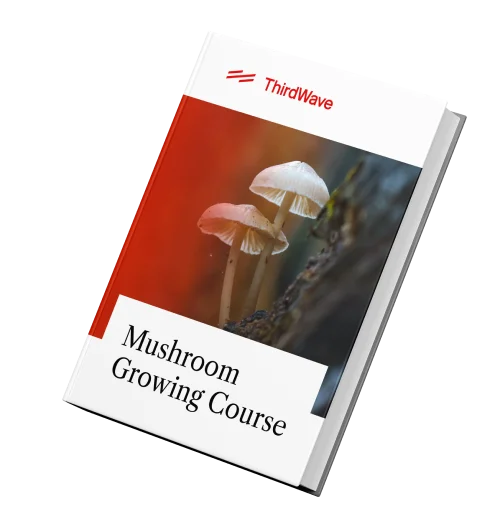Disclaimer: Psychedelics are largely illegal substances, and we do not encourage or condone their use where it is against the law. However, we accept that illicit drug use occurs and believe that offering responsible harm reduction information is imperative to keeping people safe. For that reason, this document is designed to enhance the safety of those who decide to use these substances.
This article has been medically reviewed by Katrina Oliveros, MSN-ED, BSN
People all over the world seek natural, effective healing methods to treat mental and physical health conditions. Fortunately, several such modalities exist.
Let’s start by exploring the basics of somatic breathwork.
Somatic breathwork is the therapeutic exercise of breathing in a conscious cycle that enables the brain and the body to receive a greater supply of oxygen. The term is derived from the Greek word, “sōmatikos,” which means “of the body,” defining somatic breathwork as body-conscious breathing.
Somatic breathwork is also a powerful practice to help people remain calm, grounded, and aware during psychedelic experiences. Psychedelics, a profound awareness tool itself, combined with somatic breathwork, synergizes to enhance the overall sense of purpose during the session.
This article examines somatic breathwork and psychedelic experiences, including how they converge to enhance mindfulness, meaning-making, and transformation.

Understanding Somatic Breathwork
Somatic breathwork is an ancient practice that utilizes conscious breathing to direct more oxygen to the brain and body. This method empowers practitioners to relax, recharge, recover, and develop a deeper awareness of their bodies, including the sensation of existing in one’s own skin.
Through its calming effects, somatic breathwork helps regulate the nervous system and reduce the tendency to overreact in stressful situations. Somatic breathing helps individuals rely on mind-body intelligence, enabling thoughtful perspectives and facilitating rooted, centered responses. This effect empowers practitioners to express themselves authentically and connect to their deepest truths.
For some practitioners, somatic breathwork goes beyond relaxing the mind and aiding the body in recovering from a stressful situation. Somatic breathing also induces altered states of consciousness. Through diaphragmatic breathing, somatic practices introduce more oxygen to the brain and bloodstream, which results in a “high” sensation.
Principles and Techniques
Most people learn somatic breathwork techniques in a therapeutic environment. Others discover the practice through breathwork ceremonies led by experienced guides. The process looks something like this:
- Practitioners sit or lie down, awaiting the conscious-breathing instructions.
- The therapist or guide instructs the practitioners to begin inhaling and exhaling without a pause in between.
- The practitioners eventually find a cyclical flow with air moving in and out of the nose, mouth, or both.
This exercise allows the body to breathe deeply through the diaphragm, reducing stress while activating relaxation. In a calmer state, diaphragmatic breathing allows people to reach deeper layers of self, release hidden emotions, and break destructive mental patterns.
Through somatic breathing, the practitioner’s body begins to generate an energetic state known as activation. This, in turn, helps individuals determine what no longer serves them and discover effective tools to manage stress or trauma.
Philosophies and Cultural Significance
Somatic breathwork has roots in many ancient cultures. Over time, these cultures have evolved and integrated practices into modern therapeutic settings. Most somatic breathing philosophies believe:
- Breathing is a form of communication.
- The body records the past.
- Conscious breathing brings awareness.
- The body knows what it needs to heal.
- Breath follows awareness and awareness follows breath.
- Breathing methods reflect how a person lives.
- Conscious breathing is the foundation of a conscious community.
With the basic elements of somatic breathwork in mind, let’s explore the connection between somatic breathing and psychedelic experiences.

The Psychedelic Experience: An Overview
Psychedelics are substances that alter sensory perceptions, thoughts, and energy levels. In many cases, psychedelic drugs also induce visual and auditory hallucinations. LSD, psilocybin, ayahuasca, and peyote are some of the most common mind-expanding psychedelic substances.
For centuries, many cultures have used psychedelics to seek spiritual enlightenment. One of the oldest historical records of psychedelic use takes the form of 9,000-year-old cave paintings in Algeria, depicting a mushroom shaman with Psilocybe mairei, a species of psychedelic mushroom, sprouting from his body.
Records of peyote use date back to 3,700 BCE.
Psychedelics interact with the brain and body in unique ways. Classic psychedelics like LSD and psilocybin interact with the brain’s serotonin receptors, particularly 5-HT2A. 5-HT2A activation creates connective pathways between neural regions that usually do not communicate, explaining the entirely novel sensory, emotional, and cognitive experiences that unfold.
The Role of Breathing in Altered States
Applying the right breathing technique can be incredibly valuable during altered states of consciousness.
Somatic breathwork induces altered states of consciousness in and of itself. At the same time, it can help facilitate positive experiences during a mind-altering psychedelic trip.
By controlling breath rhythm, somatic breathwork enables practitioners to induce states of calm when they might otherwise feel stressed or uncomfortable, such as during a psychedelic experience. Fear or discomfort may arise during a psychedelic trip if the user experiences unsettling visual hallucinations, senses sudden anxiety, or starts the psychedelic experience outside of the desired headspace.
Through proper breathing exercises, psychedelic users can reduce the likelihood of having an unfavorable trip. These exercises enable participants to power through potentially difficult feelings and sensations during the session.
Somatic breathing and other breathing techniques can influence the brain and positively alter one’s perception of events. Somatic breathwork focuses on introducing more oxygen into the body. he body’s CO2 content decreases and, so too, as a result, do stress hormones like cortisol. Reduced stress hormones and increased blood oxygenation are likely what’s responsible for the sense of well-being, vibrant visual effects, and overall sense of comfort during these exercises.
Circular breathing, like the pattern followed in somatic breathwork, limits the breaks an individual takes between inhalations and exhalations. At first, this practice may induce mild dizziness, but once accustomed to the practice, circular breathing induces a sense of calm and broadens the mind to more productive reactions to the scenarios at hand.

Potential Benefits and Applications of Somatic Breathwork
Somatic breathwork presents numerous benefits that practitioners can use to guide them through psychedelic experiences and everyday life. As a non-pharmacological method, somatic breathing exercises empower the body to heal:
- Anxiety reduction
- Increased body awareness
- Pain relief
- Power over negative emotions
- Greater mental and emotional control
- Improving mental clarity
- Eliminating CO2 buildup from the body
- Improved blood circulation
Somatic breathwork also helps quiet an individual’s fight or flight responses so that he or she can more effectively address stress, anxiety, and depression. Research suggests that individuals who practice deep, circular breathing exercises like somatic breathwork tend to enjoy happier moods and better sleep quality.
Simple, 30-minute exercises each day will probably lower blood pressure, nourish the body’s various tissues, and create a deeper connection between the body and the mind.
In this state, individuals also become better able to address trauma and the sources of other mental health issues from a calm and collected perspective. As such, these individuals may become better suited to safely and naturally manage the symptoms they live with.

Grow 1 Year's Worth of Microdoses in Just 6 Weeks
Third Wave partnered with top mycologists to create the world’s easiest and best mushroom growing program (kit, course, and expert support).
- Pre-sterilized and sealed
(ready to use out of the box) - Step-by-step video and text course
- Access to growing expert in community
- Make your first harvest in 4-6 weeks
- Average yield is 1 - 4 ounces (28-108g)
- Fits in a drawer or closet
- Enter info for Third Wave discounts:


Grow 1 Year's Worth of Microdoses in Just 6 Weeks
Third Wave partnered with top mycologists to create the world’s easiest and best mushroom growing program (kit, course, and expert support).
- Pre-sterilized and sealed
(ready to use out of the box) - Step-by-step video and text course
- Access to experts in community
- Make your first harvest in 4-6 weeks
- Average yield is 1 - 4 ounces (28-108g)
- Fits in a drawer or closet
- Enter info for Third Wave discounts
Psychedelics vs Somatic Breathwork: Safety & Sustainability
In the right setting, and under the guidance of an experienced professional, both psychedelic therapy and somatic breathwork are safe and effective. However, when it comes to sustainability, somatic breathwork has a clear advantage. Because somatic breathwork requires no additional supplies or substances, it’s easy to conduct on an individual level once the practice has been perfected.
With psychedelic substances, the therapeutic application is only as sustainable as the individual’s resources. For example, his or her financial status will play a role in the availability of this treatment modality, whether this is related to obtaining psychedelic substances or paying for psychedelic-assisted therapy sessions.

Commonalities Between Somatic Breathwork and Psychedelic States
Though there are significant differences to note between the applications of somatic breathwork and psychedelic medicine, these health modalities also share common ground.
For example, both applications can induce altered states of consciousness. Researchers have noted similar chemical changes within the brain during psychedelic experiences and deep meditative breathing exercises. In both scenarios, the brain chemical DMN relaxes and allows an individual to shift his or her perceptions of current events.
Both practices are also effective thanks to their interactions with various brain chemicals and hormone receptors. As mentioned, somatic breathwork and psychedelic medicine both interact with the body’s serotonin receptors and effectively increase serotonin levels. When combined, somatic breathwork and psychedelic medicine stand to improve an individual’s sense of well-being, responses to current events, and perspectives on his or her existence as it relates to the rest of the universe.
Common experiences that arise during both healing techniques include:
- The sense of being present and in the moment
- Relief-inducing emotional releases
- Personal growth
- A greater sense of overall wellness
- Release from pain and sadness
- Enhanced energy, focus, and clarity
- A meaningful mental/emotional journey
- The sensation of connecting with the universe or spirits
- A spiritually profound experience
- The sense of oneness or the experience of ego death
Both practices enable participants to explore mindfulness, develop more introspective ways of thinking, and release both positive and negative thoughts and emotions.
Somatic breathwork and psychedelic medicine stand to improve the efficacy of natural healing processes. When combined, the two practices can greatly enhance the individual’s overall responses to each.
Both practices present safe, natural benefits when used under the right conditions, and both experiences can potentially lead to similar positive outcomes. If you’re interested in one therapy or the other, but you’re a little hesitant to try psychedelics, you might benefit from inducing an altered state of consciousness via somatic breathwork.
To get started, take a look at our directory of somatic practitioners to find a professional in your area to reach out to.
Stay tuned for more on somatic breathwork, mindfulness exercises, and psychedelic experiences, as we’ll cover more on these topics in later blog posts.







